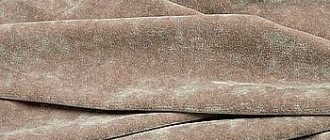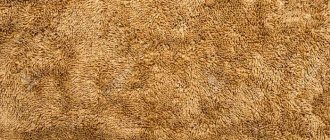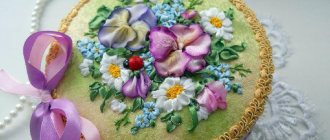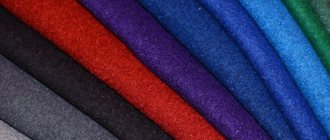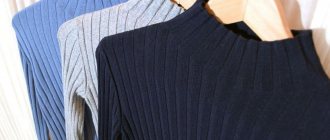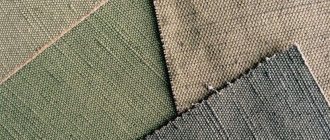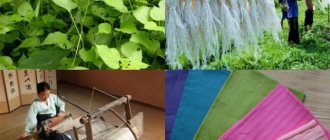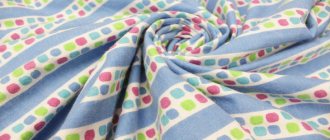What type of fabric is this
The process of making plush is almost the same as that of velvet. The difference is the length of the pile. In the first case, it is longer than in the second. Modern material is the result of machine production.
Plush colors
One of the most common is loop plush: two threads are thrown onto the needles, the loops are made short on the front side, and longer on the back side.
There are several ways to create it:
- A single-font machine makes fabric from cotton threads, and sometimes from viscose (fleece plush). The final loops here are short, no more than 4 mm.
- The Rachel machine produces patterned and looped plush.
- The double-font round and Rachel machine produce material with long fibers (15-16 mm).
Velvet
Luxurious velvet fabric: a detailed review
more details
Properties
The material has a fairly high pile - elongated threads are distributed evenly or zonally (depending on the desired decorative effect). Since the pile is high, it must be smoothed (in any direction - using special industrial brushes and brushes for clothes). The length of the threads is 3-16 mm. They are not as thick as velvet fabric, but plush pile cannot be called sparse.
Plush uses three fiber systems. The base is cotton fabric. The weft threads are called “ground”; the pile is made of wool or silk (the pile is embossed or comes “as is”). Despite the dense undercoat, the material drapes easily - the drapery protects it from bald spots and creases.
And lastly, the plush is warm. You will be comfortable in it even in the most severe frosts.
Origin story
This type of fabric has been known for many years. In China, soft, piled material has been made since the 3rd century BC. Craftsmen of that time used silk threads to create plush. In the 7th-7th centuries, mention of it appeared in the Middle East.
And in Europe they learned to make plush around the 12th century. At that time, Europeans highly appreciated the rich appearance of things made from soft plush. This expensive fabric was brought to Russia from Europe until the Velvet Court was opened in Moscow in 1623.
Rules of care
Products require careful care. They are very capricious and any wrong action can permanently ruin the appearance of the product. In order for this fabric to retain its original characteristics for a long time, the following rules must be followed:
- For plush products, dry cleaning is recommended;
- If you decide to wash the item yourself, under no circumstances should you unscrew it;
- For ironing, the “Vertical steam” function is recommended;
- Regular ironing can ruin the appearance;
- Do not use rough brushes or strong detergents to remove dirt.
Plush is a fabric that always looks rich in the interior. She looks expensive and presentable. With such textiles, the room takes on a cozy, rich style with a hint of vintage. However, do not forget that this material is very capricious and requires careful handling.
© 2021 textiletrend.ru
Types of fabric
Depending on the fiber, plush can be:
- Unilateral.
- Double-sided has hairs on both the front and back sides.
- The cut one looks like velvet, with thick fibers.
- Looped resembles terry.
By finishing, fabric can be divided into:
- Patterned (due to the different lengths of the fibers, an unusual texture is obtained).
- Smooth (pile over the entire surface of the same length).
- Embossed (the fibers lie in different directions).
- Shaped (the fur is pressed or cut in places).
Main characteristics
The plush fabric has a high pile. The elongated fibers can be evenly distributed over the entire surface or occupy only certain areas. Due to the high height, the pile is smoothed on one side. During production, it is laid with special brushes. In everyday life, this can be done with ordinary one, which is used for clothing. The length of the pile can be from 3 to 8 mm, in some cases up to 16 mm. It is not as thick as velvet, but it cannot be called rare either.
Plush has three thread systems. The base is made of cotton fabric, the weft threads form the “ground”, and the pile is made of silk or wool. The latter can be embossed. It is applied using a stencil, creating designs on the fabric. This gives a special look to the final product.
Read about: guipure - grace, lightness and beauty in every stroke.
Despite the large “undercoat”, the fabric can easily be adjusted to the desired conditions. It is easy to drape, and no “creases” or “bald spots” will form on the product.
It should also be noted the high thermal insulation properties of the material.
Kinds
Plush differs not only in color and pattern. It is classified depending on:
- Material;
- Type of fibers;
- Method of production and finishing.
Depending on the material of the fibers there are:
- Cotton;
- Woolen.
The cotton version (see photo below) consists of two cotton warps and a weft thread. It consists of threads of viscose silk and wool. The warp of this material is much denser than the weft. Wool plush in appearance resembles fur, but with natural threads. The mass of such fabric per 1 sq.m is 500-850 g, and the tensile strength is up to 100 kgf. It retains heat perfectly thanks to its high, thick pile.
Depending on the type of fiber, the material is:
- Split;
- Looped (uncut);
- Unilateral;
- Bilateral.
The split version resembles velvet. It has many dense fibers pointing upward. The looped method of production resembles terry cloth. To produce this plush, a special knitting machine is used. When creating a fabric, additional threads are added to the ground to form this type of pile. It is from them that the broaches are formed, forming a loop weave on the fabric. Plush can be cross-knitted or warp-knitted.
artificial plush
The double-sided version, as the name implies, has an “undercoat” on both the front and back sides. This is not a completely standard type of this material, however, it can often be found on sale.
According to finishing, the fabric is divided into:
- Smooth;
- Pictured;
- Embossed;
- Shaped.
Smooth is a standard version of plush with a pile that is the same in height over the entire surface. This plush is most often used for upholstery . The patterned one gets an unusual texture by alternating the lengths of the fibers. It can be looped or split type, and the transitions can be smooth or sharp.
A characteristic feature of pressed (embossed) plush is that the pile has a different direction of laying.
Read about: madapolam fabric: crisp cleanliness for thrifty housewives.
The shaped version is somewhat similar to the patterned one, but more versatile. It can be cut in places or compressed. This plush has a reinforced pile in one place, but is left untouched in another. Using jacquard weaving technology, unusual patterns can be formed on the fabric, combined with different types of textures.
Raw materials and fabric production
The creation technique is similar to making fashionable velvet, the only exception being the size of the fibers on the products. And also during the production of plush, 2 threads are applied to the needle. Accordingly, the loops of the inner edge become truly elongated, and on the visible side - very short. Elongated threads are located closer to the hooks of the needles. The main fibers are called ground fibers and the rest are called plush fibers. To sew smooth fabric, you need to place 1 thread in the long loop, and the second in the shorter one.
To create a pattern on a surface, you need a completely different method. Therefore, everything depends on the types of plush and different types of devices are used for each. For example, to create fabric with fleece up to 15 or even 17 mm, you need to use special 2-piece round machines or Rachel machines. And the weaving look of the device is obtained by using viscose threads from 2 to 5 mm or cotton yarn and a single-color machine. After all, since the beginning of time, the most natural silk has been used to make linen.
You might be interested in Description of nylon, areas of application of the fabric and types of fibers
Plush blanket
It is also used in modern times, but such clothing is greatly overpriced and not everyone can purchase a product at that price. And to keep the cost down, the base is made using viscose silk, cotton, wool or staple yarn.
Cutting and sewing
Plush material, what it is and how to properly sew blankets, slippers or sweaters is really easy to figure out. The finishing can be shaped, smooth, patterned and embossed. What is better and how to distinguish it must be written in books on needlework. It’s not difficult to guess which finish is suitable for a Teddy bear or a warm jumper. However, it is necessary to know several significant features and different methods of finishing the fabric in advance, so that later you do not make stupid mistakes when making or consuming this material.
Product
Plush is, first of all, softness and lightness, synthetics in many options for any warm clothing.
The patterned version is made unique by weaving fibers of different lengths. And the shaped finishing method involves keeping the patterned in a more complex method, where there are more facets. The smooth method turned out to be the simplest, in which the fibers are always the same length on the canvas. And the embossed variation is characterized by the fact that the pile is laid in various directions.
You might be interested in this Features of fuqra: fabric properties
Advantages and disadvantages
Plush, like any other material, has its advantages and disadvantages. Let's start with the pros:
- High strength.
- Excellent thermal insulation characteristics.
- Attractive appearance.
- Wide scope of application.
- Color fastness.
- No tendency to deformation.
But the fabric has its drawbacks - it is expensive, “collects” dust, absorbs dirt and wears out if not properly cared for. The properties of a particular product depend on the materials used to make it. That is, two plush things can be very different from each other.
Kinds
We found out what plush is, and now we need to understand the types of this matter.
The difference in canvas may depend on certain indicators:
- Colors - with one color, two, three or a whole rainbow;
- Design - small, medium, covering the entire surface;
- Production methods;
- Material - wool and cotton variations are formed;
- Finishes - shaped, smooth, embossed and patterned fabric;
- Type of fibers - single-sided, split, looped, double-sided options.
Children's things
Based on the material, the following types of plush are distinguished: wool and cotton. Woolen material looks too similar to fur, and is made from natural threads. The weight of this fabric per 1 m is only 550-900 grams. Durable fabric is protected from tears and damage. A thick layer of fiber helps not to freeze even in the coldest season. You can warm your palms and whole body in a plush outfit. And the cotton variation contains two cotton warps and weft threads. The composition contains threads of wool and silk made of viscose.
Slippers
According to the fibers, the material can be: Looped, Single-sided, Split, Double-sided. The loop method of making is very similar to making terry cloth. And the cutting method is basically reminiscent of the production of velvet, famous in fashion trends. The material has a variety of long fibers that are directed only upward and in one direction. To make such plush, you need to use special knitting machines. When fabric is produced to create this type of fleece, additional threads are included in the ground.
You might be interested in All about cloth and fabrics for billiard tables
One-sided view
Note! The threads form broaches that help form loop weaving on this material. Plush fabric can be warp knitted or cross-knitted. And also natural and artificial, in two-sided and one-sided variations. Villi on one side or on both sides at once, it all depends on the preferences of consumers of soft goods.
Looped look
Application
The scope of application of fabric today is large. However, when this material first began to be produced in Europe, its cost was rather high and only very wealthy people could afford to buy plush. Making the fabric was a very labor-intensive process.
What is plush used for now? This:
- First of all, making toys. No other fabric can replace plush in sewing soft and fluffy bears, hares, and dogs.
- Manufacture of wearing apparel. Especially for children. Lightweight and pleasant to the touch material is ideal for delicate baby skin. The production of clothing for adults is also gaining momentum: both women's and men's. For the most part, these are models for the home, but depending on the texture of the plush fabric, you can also sew outfits for going out. For example, dresses, skirts, jackets, vests. Often plush with thick woolen pile is used for interior decoration and insulation of outerwear.
- Along with fleece, plush can be found in the production of interior trim for shoes, both demi-season and winter. Depends on the type of material.
- Pile fabric is used for sewing furniture covers and upholstery. The more textured and interesting the pattern, the more impressive the furniture looks. Accordingly, the more expensive it is.
- Production of home textiles: curtains, curtains, tablecloths, pillows, bedspreads, blankets. On sale you can find a variety of interior items to suit every taste and budget. Of course, decoration with plush material looks very elegant and expensive, provided that a sense of proportion and style is observed.
